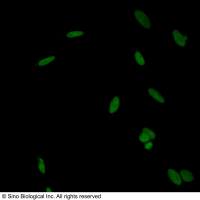Poly(ADP-ribosyl)ation is a post-translational modification of proteins mediated by Poly(ADP-ribose) polymerases (Parps), a family of 17 members. Among them, Poly(ADP-ribose) polymerase-1 (Parp-1) and Parp-2 are so far the sole enzymes whose catalytic activity has been shown to be induced by DNA strand breaks. The generation and characterization of Parp-1 and Parp-2 deficient cellular and animal models have largely contributed to describe both proteins as active players of the base excision repair/single-strand break repair (BER/SSBR) process with both redundant and more specific functions. Double Parp-1−/− Parp-2−/− embryos die at gastrulation demonstrating the crucial role of poly(ADP-ribosyl)ation during embryonic development, whereas a specific female lethality related to X chromosome instability is associated with the Parp-1+/− Parp-2−/− genotype. Finally, recent research discovered emerging unique functions of Parp-2 in physiological processes including spermatogenesis, T-cell maturation, and adipogenesis although with distinct mechanisms. In this chapter, we describe standard operating procedures used to genotype and phenotype both mouse lines and the derived mouse embryonic fibroblasts.






